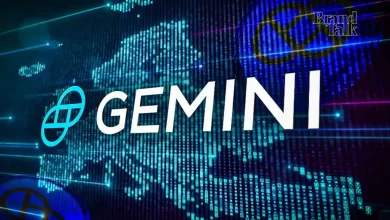Why It Matters for Secure and Scalable Networks

The traditional banking system is notorious for its expensive fees, slow transfer times, and concerns regarding the privacy of user data. These problems exist because of the centralized nature of these systems, where large intermediaries such as banks are responsible for processing transactions and managing users’ information.
Cryptocurrencies based on blockchain have long been touted as a solution to these problems, facilitating faster transactions at lower costs and offering enhanced security. But how do they do this? The secret lies in their decentralization.
In decentralized networks, there’s no single entity that oversees everything. Instead, control is delegated to their users, who work with one another to verify and process transactions.
What is decentralization in blockchain?
In the context of blockchain, decentralization refers to how control is distributed across hundreds or potentially even thousands of individual “nodes”. These nodes are generally servers or devices that each store a copy of the blockchain, recording all of the transactions that take place on the network.
Power is shared among these nodes equally, so no individual can ever take control of the network and start manipulating it. When decisions need to be made about new transactions being added to the blockchain, each of the nodes works independently to validate and approve that transaction. They do this through a secure consensus mechanism that enforces transparency and security.
This is in stark contrast to centralized systems, where a single authority makes all of the decisions and approves transactions. Decentralization can be advantageous, as blockchains are all but impossible to manipulate and censor.
How does it work in practice?
In blockchains, the network of individual nodes is tasked with validating transactions and maintaining and securing the system. When a new transaction is processed, the initiator shares it with the network so it can be verified. Then, all of the nodes attempt to check it’s authenticity, which is done by validating the sender’s digital signature and ensuring they have sufficient funds available. These transactions are then put into “blocks”, which are progressively added to the blockchain.
Blockchains employ consensus mechanisms to determine which block is added next. Examples include proof-of work, where nodes compete to solve mathematical problems for the right to propose the next block, and proof-of-stake, where validators are chosen at random based on how many funds they have “staked” to the network.
These blocks are essentially lists of transactions, containing details of the senders, recipients, and amounts transferred, as well as a timestamp of when the block was generated, and a hash that links it to the previous block. Once the block has been published to the blockchain, it becomes tamperproof, as no single node has the ability to alter it.
One obvious advantage of decentralized systems compared to their centralized equivalents is their enhanced security, as there’s no single point of failure. Even if a large number of nodes get taken offline or compromised, the remaining nodes will ensure the network remains up and running. They also boost transparency, as every block is publicly available for anyone to read, and users can retain full control of their funds, without having to trust intermediaries, meaning they can’t be confiscated. Moreover, no central authority can censor another user or restrict their access.
What determines centralization?
The level of decentralization varies from blockchain to blockchain, based on several factors. As a rule, the more nodes there are, the more decentralized a network is, as it becomes harder for any single entity to take over a majority of the network’s nodes.
Other factors include the number of validators, or miners. If a network has a large number of validators, it becomes much more difficult for them to collude with one another in an effort to manipulate transactions. Token distribution is also critical to decentralization, as if any one party controls a significant number of the token supply, they could exert too much influence over the network’s governance.
Finally, blockchains need to minimize their reliance on cloud-based or centralized servers, which could put them under the control of a few large entities. Rather than using cloud-based servers, validators are encouraged to set up their servers to host a blockchain node.
With more than 21,000 nodes spread across more than 90 countries, Bitcoin is generally considered to be the most decentralized blockchain around. Ethereum boasts more than 6,000 nodes operating in 81 countries, making it highly decentralized too.
Maintaining decentralization with innovation
Decentralization is of critical importance to blockchains, and that’s why the industry continually applauds any effort to improve it. This is especially true in the case of newer blockchains that need to maintain decentralization while increasing privacy and scalability.
For blockchain to become more widely adopted, privacy is going to be key, for many institutions require the ability to maintain anonymity. The Layer-1 blockchain Aleo is looking to provide this using innovative zero-knowledge proof technologies, which use cryptography to enable transactions to be validated without exposing any of the details of those transactions.
ZK-proofs are one of the most promising new developments in blockchain today, but they are challenging to implement because of the way they increase centralization. The problem is that generating ZK-proofs requires enormous computing power, and most nodes cannot access such resources. Due to this, most ZK-proofs are generated by a small handful of specialized nodes.
The obvious risk is that, should one of these specialized nodes go offline, the entire system could be compromised. That’s why Aleo has been working on a solution – a decentralized network of ZK-proof generators. With Aleo, users can easily set up a node to generate their own proofs, or else delegate this task to a third-party node.
The secret sauce here is Aleo’s proof-of-succinct-work consensus mechanism, which is uniquely able to redirect computational power from the rest of the network towards useful operations. In other words, it essentially enables nodes to borrow computational resources from the rest of the network to perform tasks they couldn’t otherwise handle.
In this system, nodes compete to solve the Coinbase Puzzle, which is a cryptographic challenge where nodes carry out the calculations needed to generate proofs. Nodes are rewarded as an incentive to perform these calculations, which get progressively more difficult over time. As a result, the increased difficulty encourages nodes to invest in more powerful hardware to increase their rewards. In any case, the rewards for solving Coinbase Puzzles are distributed to every participant, rather than those who complete it first, making the system more inclusive and increasing its decentralization.
A Roadmap To Decentralization
In the long term, Aleo aims to build up a distributed network of thousands of validators, but to begin with, it deliberately kicked things off with a much more limited validator set, made up of just 16 nodes.
Aleo says this was a strategic decision designed to minimize problems in getting its network off the ground. Doing so provides a number of advantages that can be beneficial to new networks. For instance, the limited validator set ensures they can coordinate more efficiently to launch the network in the first place, while enhancing security through a select number of trusted participants.
By starting slowly, Aleo also has more scope to optimize its network for performance, as these efforts require close collaboration between nodes. The approach also allows for the initial node operators to focus on creating documentation to ensure the smooth onboarding of future nodes when the time comes to expand.
In any case, that expansion will happen soon, for Aleo intends to become much more decentralized. Already, the network has expanded from 16 validators to 25, and its roadmap details how many more will be onboarded at regular intervals in the future, slowly but surely increasing its decentralization to build a secure and scalable network.


